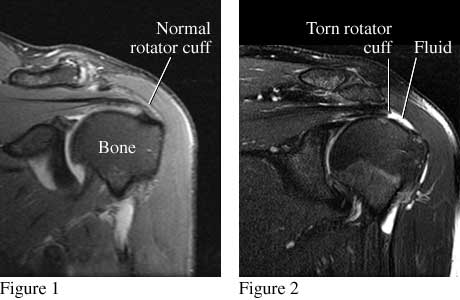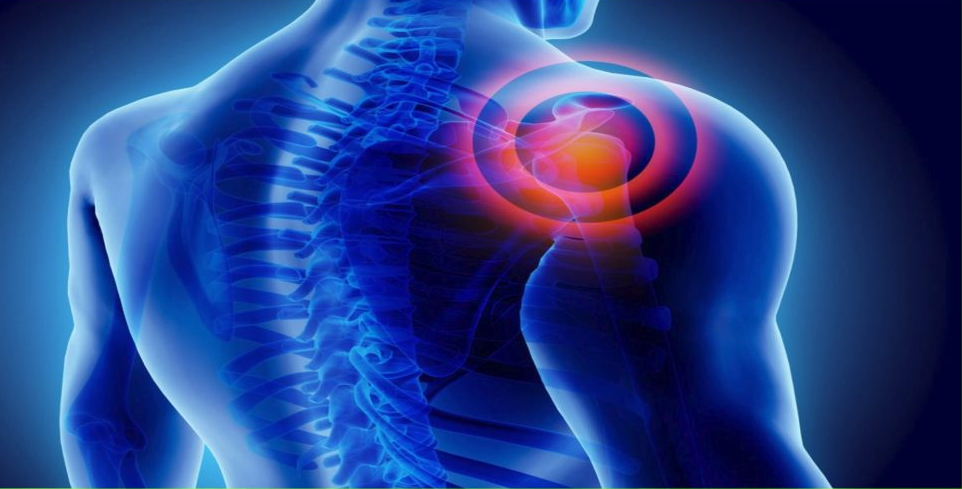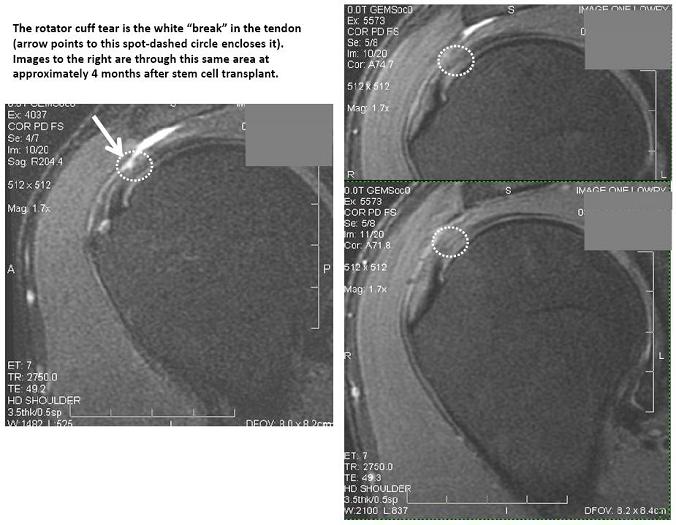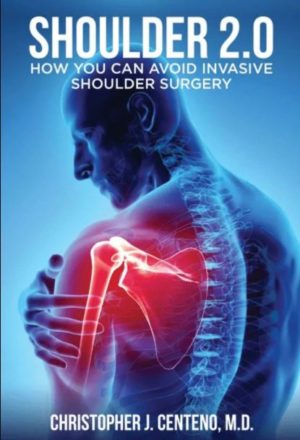What Is the Rotator Cuff?
The Rotator Cuff is a group of 4 principal muscles that stabilize and support the shoulder joint. The four muscles, and their attached tendons that comprise the Rotator Cuff are the supraspinatus, infraspinatus, subscapularis, and teres minor, and any of these could be where we could find Rotator Cuff tears. The Rotator Cuff is also important in shoulder functions such as reaching overhead, rotation, and putting your hand into your back pocket. The tendons are the parts that attach the muscles to the bone.
Rotator Cuff Injuries
The Rotator Cuff tendons can be torn with a traumatic injury, or with wear and repetitive use over time.
Tears in the Rotator Cuff can be within the muscle itself or at the site where the tendon attaches to the bone. There are different types of Rotator Cuff tears: partial tears where only a portion of the muscle or tendon is torn, or full-thickness tears where the tear extends throughout the entire muscle or tendon. If the injury involves a complete tear through the muscle to the tendon, then it is called a rupture. Rotator Cuff tears have been found to have fewer stem cells than normal tendons.
Treatments for Rotator Cuff tears
Small tears in the Rotator Cuff usually do not heal on their own but the pain associated with them can sometimes be helped with physical therapy alone. Larger tears traditionally would be treated with shoulder surgery. However, surgery can have a long downtime and often fail, or re-tear. Now stem cells can be used to treat many of these tears. Tendon ruptures cannot be helped with stem cells and still require surgery to fix.
How Do Stem Cells Help Repair Rotator Cuff Tears?
Stem cells are the body’s repair cells and can be found in higher concentrations in bone marrow. Via a simple bone marrow harvest procedure, we can isolate bone marrow cells and stem cells which are a part of that mixture. Then that concentrated bone marrow containing stem cells is precisely injected into the damaged tendons. This requires a highly skilled musculoskeletal specialist using ultrasound guidance. After this injection procedure, the cells stimulate repair of the tendon and reduce inflammation that causes pain.
What evidence is there that stem cells help?
We have been performed these types of Rotator Cuff stem cell procedures for more than a decade. We have many examples of Rotator Cuff tendons recovering and patients reporting significantly improved pain and function. We track our patients in a registry and have outcomes for shoulder procedures. We have published those results for all shoulder problems (1). Additionally, we have been enrolling patients in a randomized controlled clinic trial. We published the results for part of that study and it showed very good results. Patients treated with their own stem cells showed significantly improved pain and function verses just exercise therapy, and showed improvement on post procedural MRI’ s. The average reported improvement was 89%! See the above before and after images as an example of how a partially torn Rotator Cuff showed healing on MRI after stem cell therapy. Other groups have also published on stem cells helping Rotator Cuff tears and to help healing rates after surgery (2-6).
The normal MRI on the left demonstrates the supraspinatus muscle as it attaches on the humerus. 
Bottom Line
Newer treatment options for Rotator Cuff tears include using your body’s own repair cells to treat the damaged muscle or tendon using stem cell therapy. Regenexx enables patients the ability to use the healing power of their own stem cells to treat tears in the Rotator Cuff. Regenexx is a simple needle-in, needle-out procedure that enables the patient to avoid surgery, anesthesia, and the long down time commonly associated with surgical repair.
Please review the MRI below in which a patient had a tear in their rotator cuff. They underwent stem cell therapy for shoulder pain at Regenexx with healing of the tear, 100% resolution of pain and return to normal function.
References
(1) Centeno CJ, Al-Sayegh H, Bashir J, Goodyear S, Freeman MD. A prospective multi-site registry study of a specific protocol of autologous bone marrow concentrate for the treatment of shoulder rotator cuff tears and osteoarthritis. J Pain Res. 2015;8:269–276. Published 2015 Jun 5. doi:10.2147/JPR.S80872
(2) Kim SJ, Kim EK, Kim SJ, Song DH. Effects of bone marrow aspirate concentrate and platelet-rich plasma on patients with partial tear of the rotator cuff tendon. J Orthop Surg Res. 2018;13(1):1. Published 2018 Jan 3. doi:10.1186/s13018-017-0693-x
(3) Kim SJ, Song DH, Park JW, Park S, Kim SJ. Effect of Bone Marrow Aspirate Concentrate-Platelet-Rich Plasma on Tendon-Derived Stem Cells and Rotator Cuff Tendon Tear. Cell Transplant. 2017;26(5):867–878. doi:10.3727/096368917X694705
(4) Hernigou P, Flouzat Lachaniette CH, Delambre J, Zilber S, Duffiet P, Chevallier N, Rouard H. Biologic augmentation of rotator cuff repair with mesenchymal stem cells during arthroscopy improves healing and prevents further tears: a case-controlled study. Int Orthop. 2014 Sep;38(9):1811-8. doi: 10.1007/s00264-014-2391-1.
(5) Ajrawat P, Dwyer T, Almasri M, Veillette C, Romeo A, Leroux T, Theodoropoulos J, Nauth A, Henry P, Chahal J. Bone marrow stimulation decreases retear rates after primary arthroscopic rotator cuff repair: a systematic review and meta-analysis. J Shoulder Elbow Surg. 2019 Apr;28(4):782-791. doi:
(6) Cole BJ, Verma NN, Yanke AB, et al. Prospective Randomized Trial Of Biologic Augmentation With Mesenchymal Stem Cells In Patients undergoing Arthroscopic Rotator Cuff Repair. Orthop J Sports Med. 2019;7(7 suppl5):2325967119S00275. Published 2019 Jul 29. doi:10.1177/2325967119S00275


